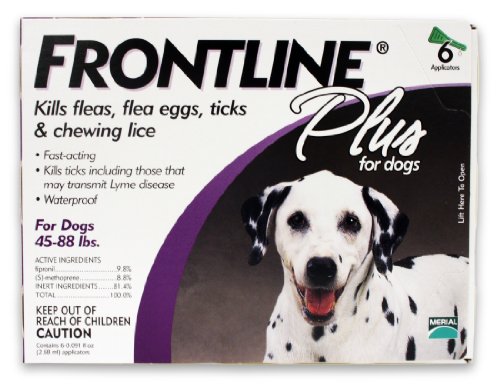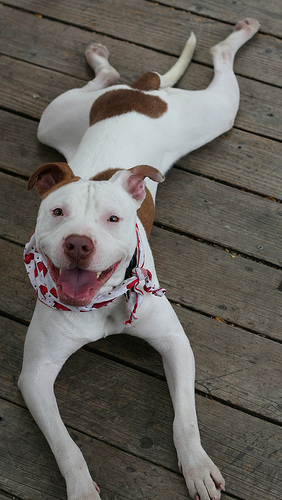
Just like most other diseases that humans can have, pets can also get cancer. Depending on the pet and the type of cancer, there are a few different treatment options. This article will give an introduction to radiation and chemotherapy. It will explain what these treatments are, why we might chose to use them, and how cancer treatment in pets is different from cancer treatment in humans.
First of all, why would we choose to treat cancer in pets with radiation or chemotherapy? Cancer treatment in pets is becoming more common. Many owners are comfortable with the surgical treatment of most cancers, but are unaware that chemotherapy and/or radiation therapy is available at a referral center. The decision to treat cancer in this way must take into consideration the type of cancer involved. Some cancers are less responsive to treatment, for example a cancer that has spread across the body or a cancer that has become resistant to previous treatment.
The decision must also take into consideration the individual circumstances of the owners. Sometimes the cost of cancer treatment is simply impossible for an owner. Cost varies with the type and number of cancer treatments used, and with the size of the animal. The cost can start in the hundreds of dollars, but in some cases could cost over $10,000 (for a large dog receiving multiple types of treatment). Cost is not the only issue. There is also the time commitment of transporting your pet to and from the referral clinic, which could be far away. Also, you and your veterinarian should discuss possible restrictions of letting children contact the pet during the treatment period. You will also have to take precautions handling your pet’s urine and feces for a short amount of time after treatment.
But back to the treatment types. What is radiation therapy? Radiation therapy uses beams of electrical particles that damage DNA. The goal is to damage the DNA in the cancer cells so severely that the cells will not be able to replicate, or will replicate more slowly. Because radiation therapy is a beam of energy, it can be focused on a specific location in the body. It will kill the cancerous cells in this area, while causing little damage to surrounding tissues. This is why radiation therapy is usually considered a local treatment.
Chemotherapy literally means ‘chemical treatment’. Chemotherapy most often refers to an anti-cancer drug that is injected directly into the blood stream. There are many different drugs that can be used. They all have slightly different actions, but work to either directly kill or to prevent replication of fast-dividing cells. Since many cancers grow quickly, chemotherapy will target the cancer cells. Because chemotherapy drugs are injected in the blood stream, the drug will spread throughout the body. This makes chemotherapy a systemic (throughout the body) and a local treatment.
Once again, this brings us back to the question of whether or not to treat a pet with radiation or chemotherapy. Ultimately, this is a decision that should be made under the guidance of your veterinarian. Certain cancers will respond better to surgery, radiation, or chemotherapy; some cancers will need two or all three of the treatment types. One key idea to remember is that the goal of cancer treatment in pets is often different than in humans. In humans, the goal of cancer treatment is to ultimately make people cancer-free, to live out rest of their lives.
In pets, however, the goal of cancer therapy is most often to improve the quality of life, and to buy them some more time. By the time pets get cancer, they are often close to the end of their lifespan anyways. The goal of cancer therapy in pets is to reduce the bad effects of the cancer (to improve quality of life) and to allow them to spend some more time with their family before they pass away (anywhere from a couple of months to a couple of years).
As mentioned above, cancer therapy is used in pets to improve their quality of life. Therefore, we try to minimize the side effects of the cancer treatment. In human medicine we are very familiar with the terrible side effects of radiation and chemotherapy. These include nausea, increased risk of infection, decreased appetite and energy, and hair loss. As in humans, different pets have different reactions to the treatment. Some pets may have no side effects, while others will need medication to ease their nausea. However, it is much less common for pets to have side effects because cancer treatment in pets is less aggressive (drugs are given in smaller doses) than in humans. Also, as opposed to human cancer patients, very few dog breeds will lose their fur during treatment. The vast majority of pets are able to lead a very comfortable lifestyle during a cancer treatment.
As you can see, cancer treatment in pets is different from cancer treatment in humans. Unfortunately, owners are sometimes faced with a difficult decision when presented with the option of radiation and chemotherapy. If you are considering cancer treatment for your pet, talk it over with your veterinarian. With the help of your vet, you will be able to make the decision that will best improve your pet’s quality of life.
By Ashley O’driscoll – Pets.ca writer
 Pet Phobias
Pet Phobias
P
Pet Phobias
Pet Phobias
P
 Important Tips on Choosing and Caring for Our Dogs and Best Friends
How well do you know your do
Important Tips on Choosing and Caring for Our Dogs and Best Friends
How well do you know your do
 Saying Goodbye to a Pet
On March 4th, 2016, we had t
Saying Goodbye to a Pet
On March 4th, 2016, we had t
 10 Reasons To Foster A Dog
10 Reasons To Foster A Dog
If you抎 like to make a re
10 Reasons To Foster A Dog
10 Reasons To Foster A Dog
If you抎 like to make a re
 Curly Tailed Dog Breeds
Dog Breeds With Curly Tails
One of the most distinct featu
Curly Tailed Dog Breeds
Dog Breeds With Curly Tails
One of the most distinct featu
Copyright © 2005-2016 Pet Information All Rights Reserved
Contact us: www162date@outlook.com